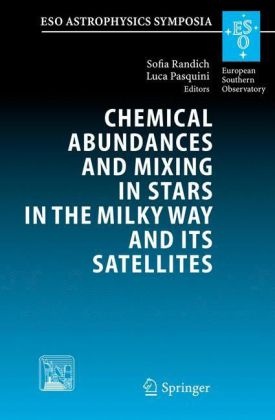Read more
This proceedings covers topics from chemical abundances in the different components of the Milky Way and in local group galaxies, via observational and theoretical papers on mixing in stars to big bang nucleosynthesis and galaxy formation and evolution. Like all volumes in the series ESO Astrophysics Symposia, this one gives a comprehensive overview of the forefront of research in this subject. It is a valuable reference for both students and researchers.
List of contents
Part 1: Abundances in the Thin and Thick Disks.- Part 2: Abundances in the Spheroidal Component.- Part 3: Tracing Mixing in Stars.- Part 4: Local Group Galaxies.- Part 5: Mixing Processes - Models.- Part 6: Implications for BBN and Galaxy Formation and Evolution.- Authors Index.
Summary
Ten years after the ?rst ESO Workshop on light elements, and ?ve years after the IAU in conference in Natal (Brazil) on the same subject, we felt that it was time to have a new conference on this topic: a wealth of new observational data have become available from the 8-meter telescopes and in particular from the VLT, and, at the same time, in the last years new theoretical roads have also been inaugurated in the interpretation of the stellar data. It soon became clear, on the other hand, that in order to understand the evolution of the fragile Li and Be in stars and in the Galaxy, the whole problem of internal mixing in stars must be addressed and understood ?rst, and therefore a large number of elements must be investigated, in many di?erent environments. Adding to this general context the fact that the FLAMES facility at the VLT was o?ered to the community one year earlier, and that it was starting to produceanimpressivewealthofabundancedataofstarsintheGalaxyandinour neighborhoods, the broad concept of the ESO–Arcetri workshop on “Chemical Abundances and Mixing in Stars in the Milky Way and its Satellites” was built. The location had to be in our beloved Toscana, and Castiglione della Pescaia was immediately identi?ed as an ideal place. To achieve from this initial proposal a full conference, which gathered - gether from September 13 to 17 more than 150 attendees in a smooth orga- zation, was possible only due to the dedicated work of the conference SOC (J.

